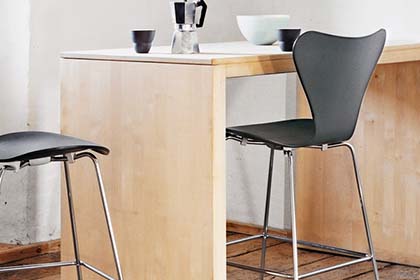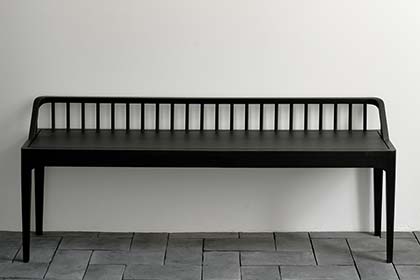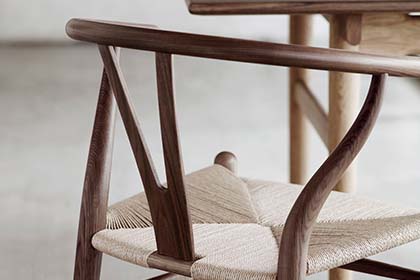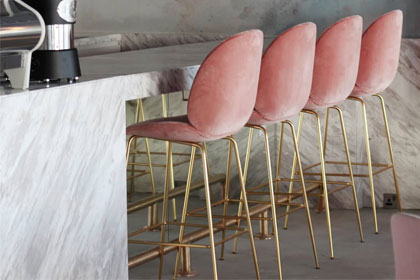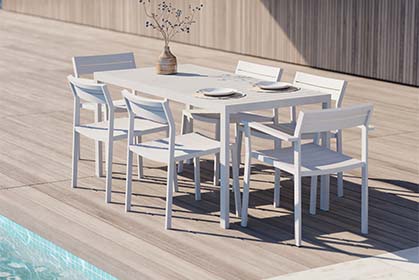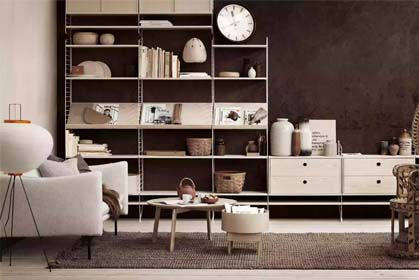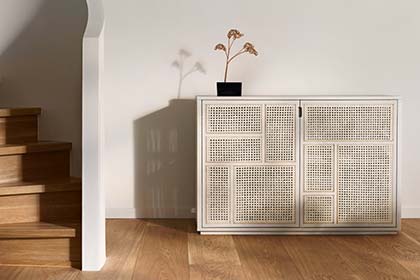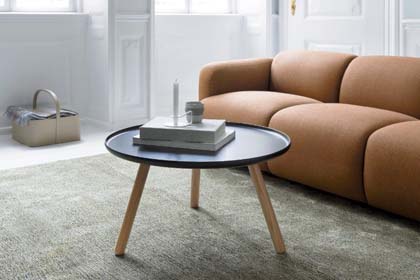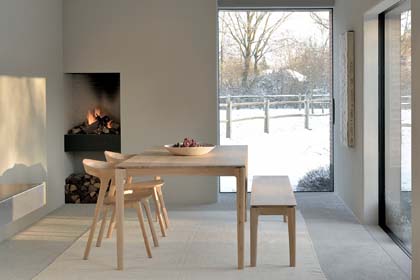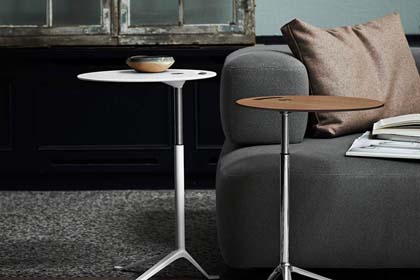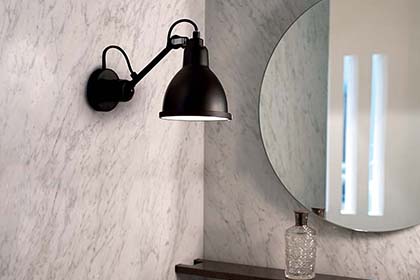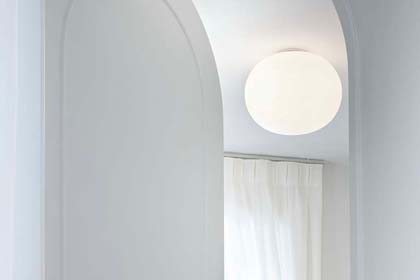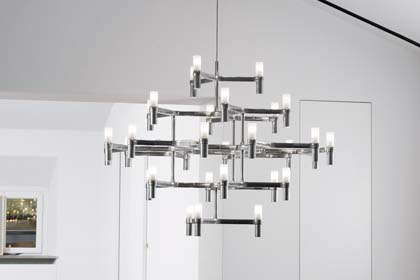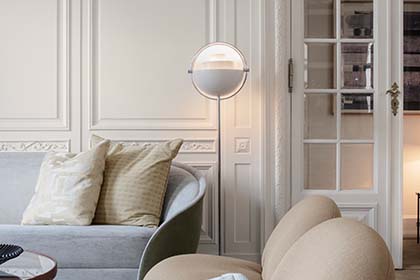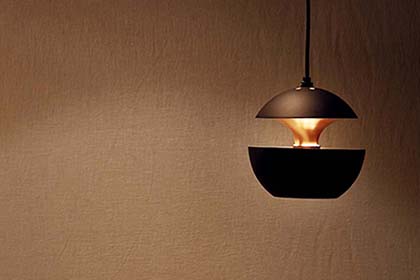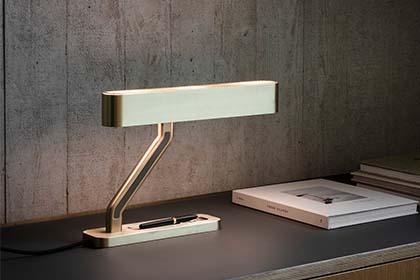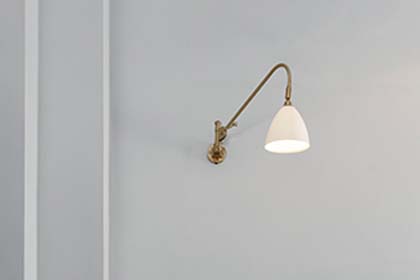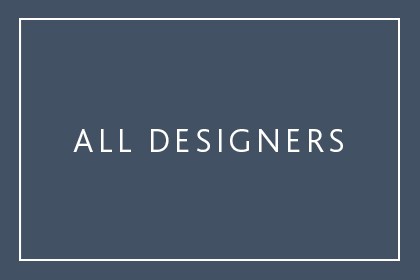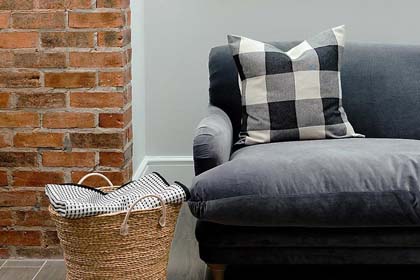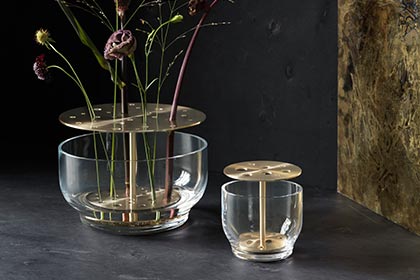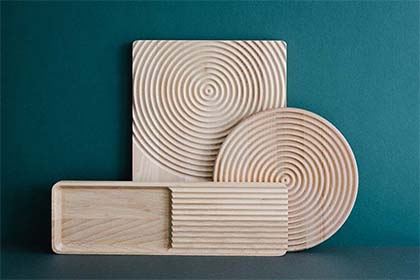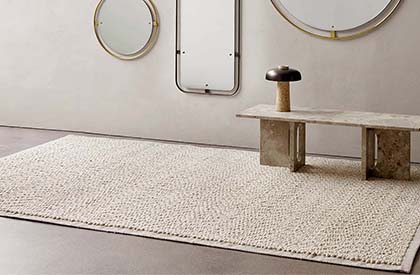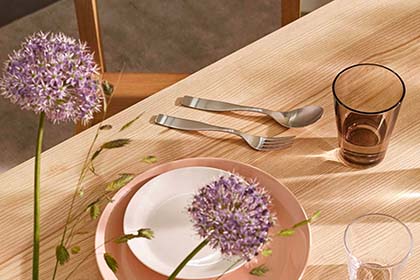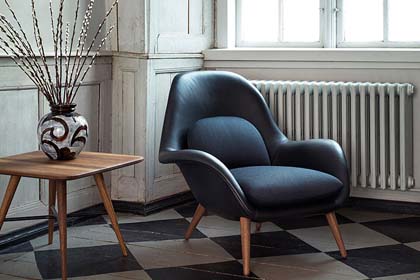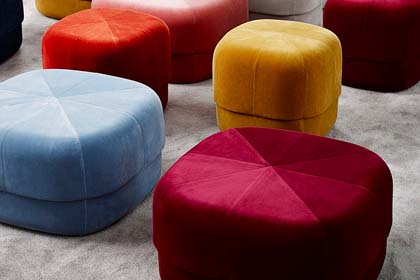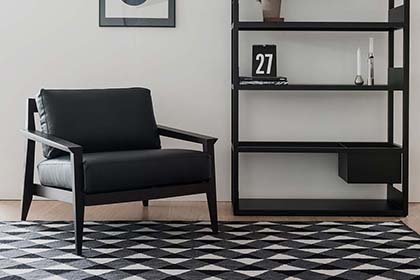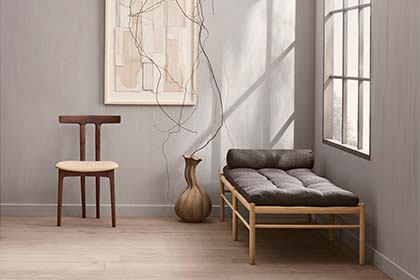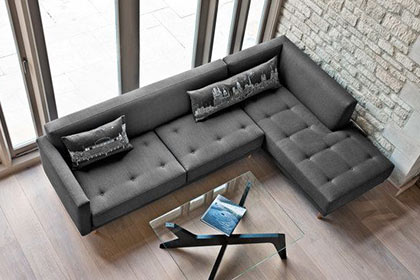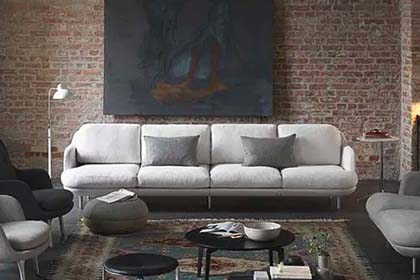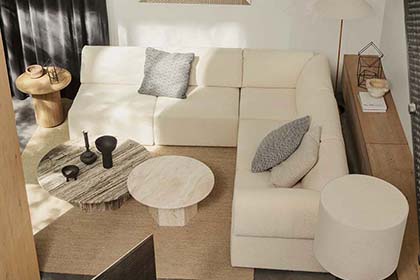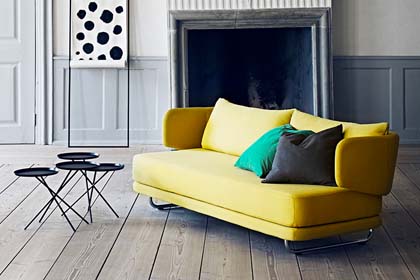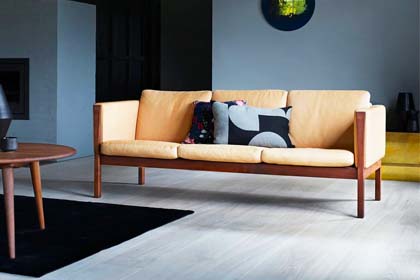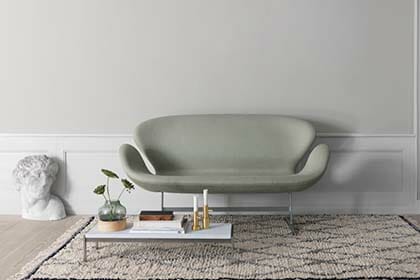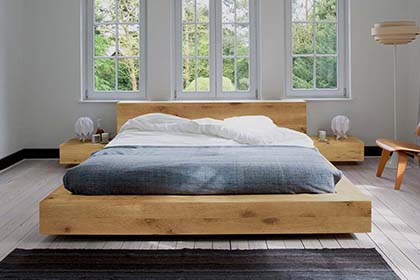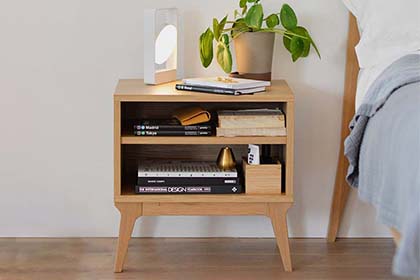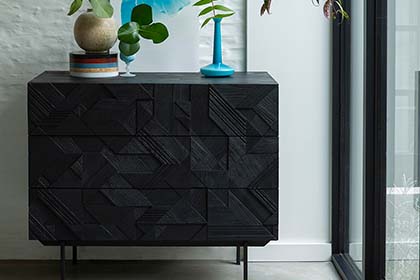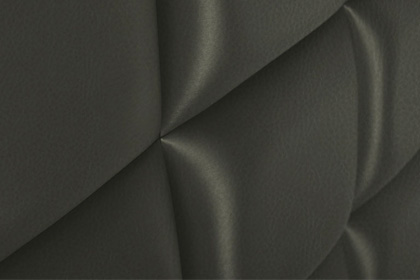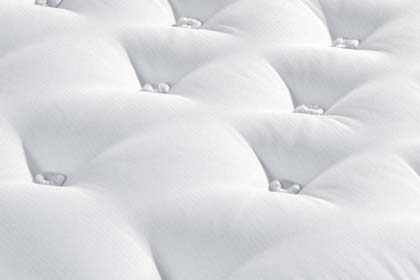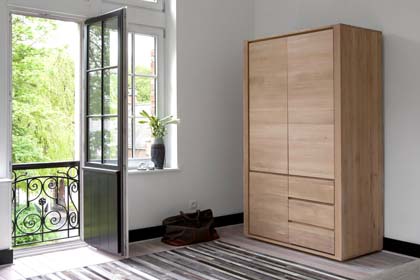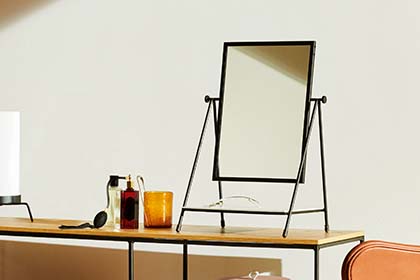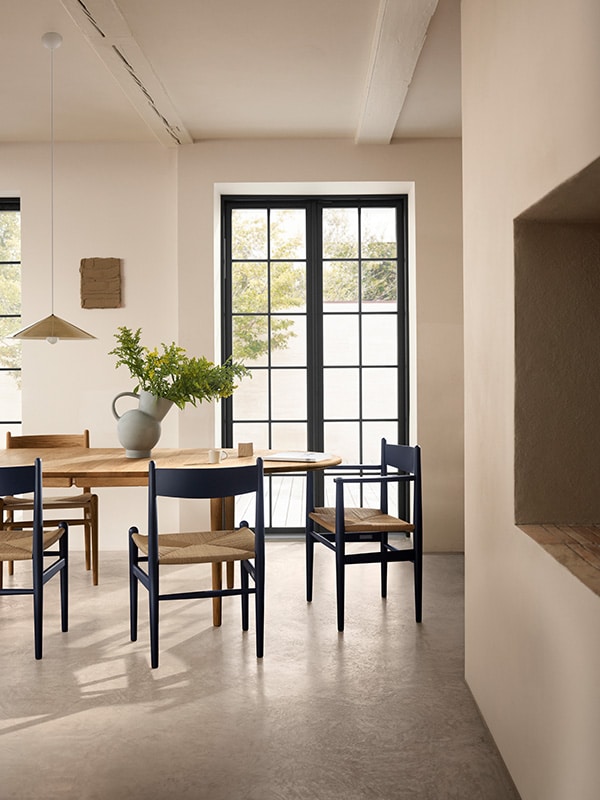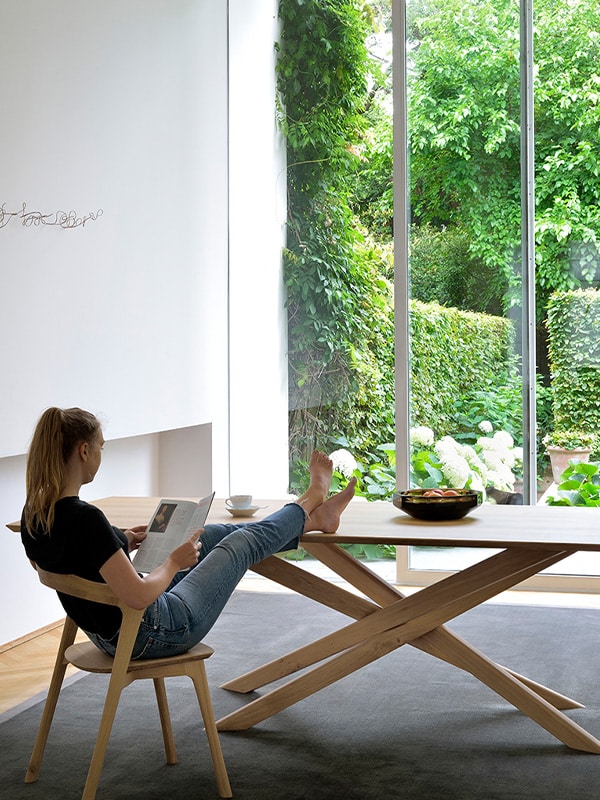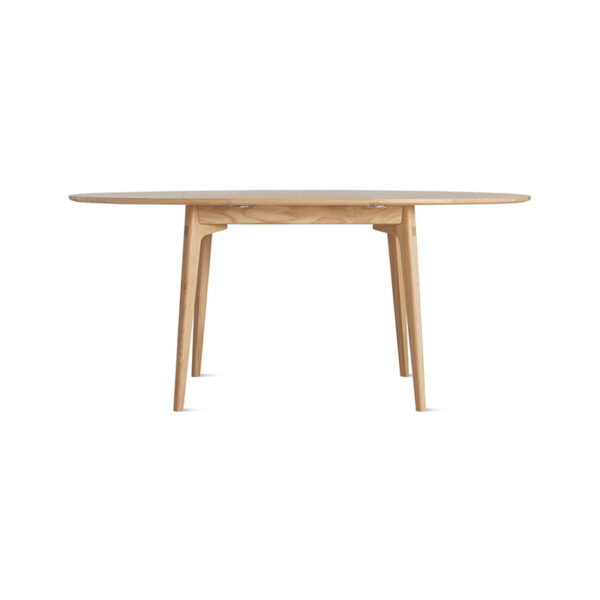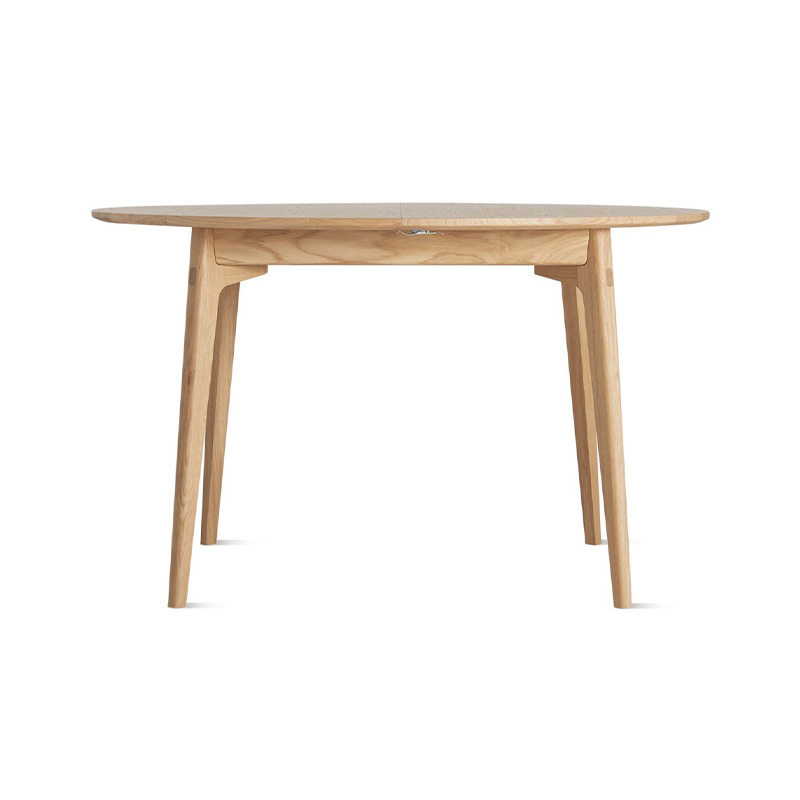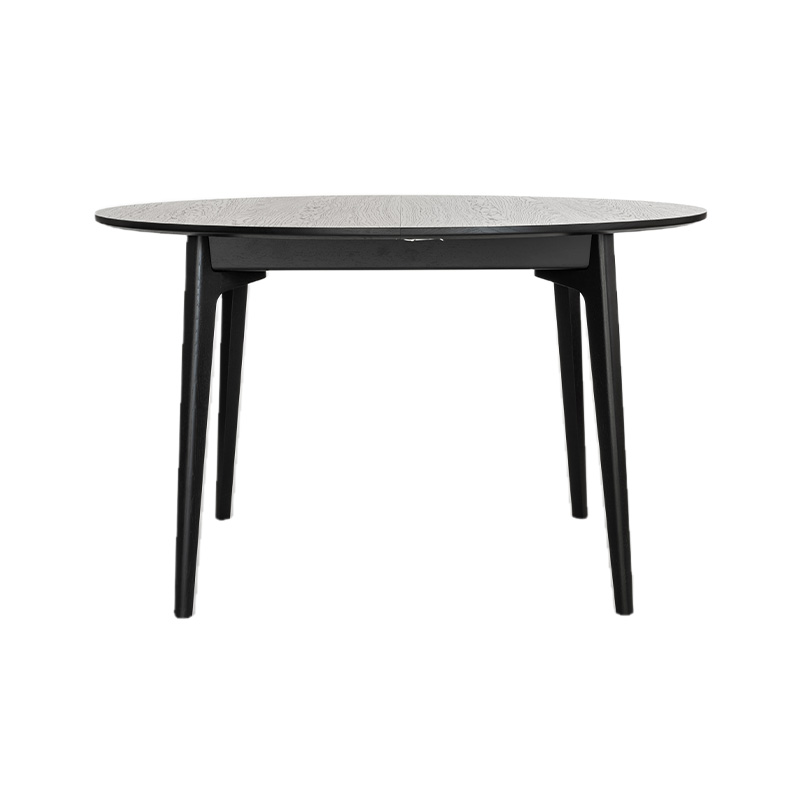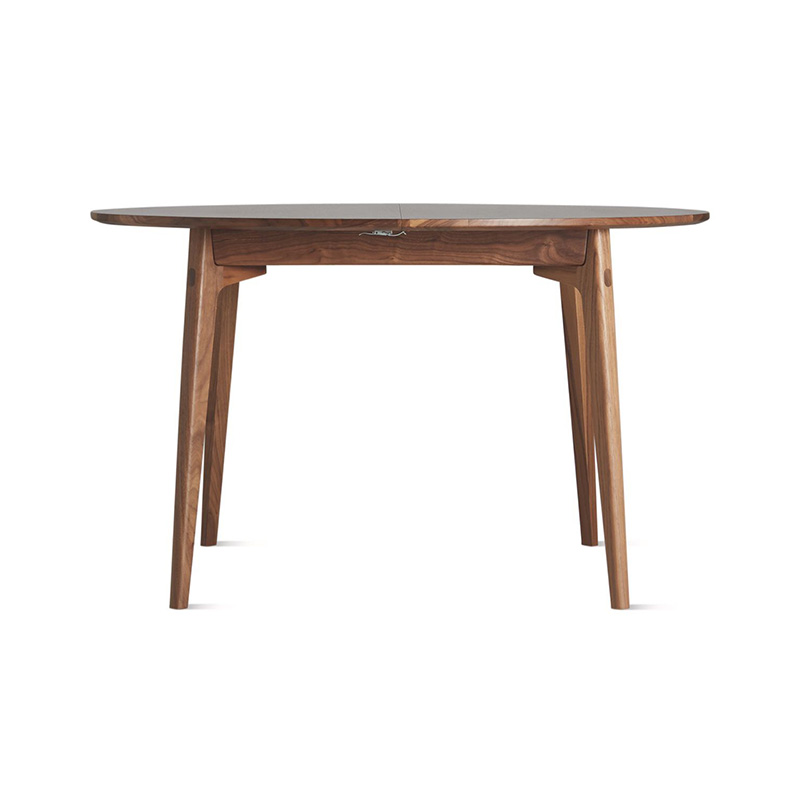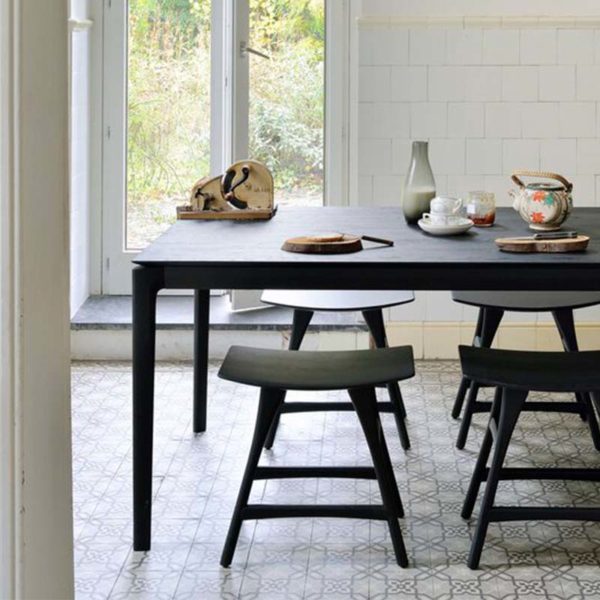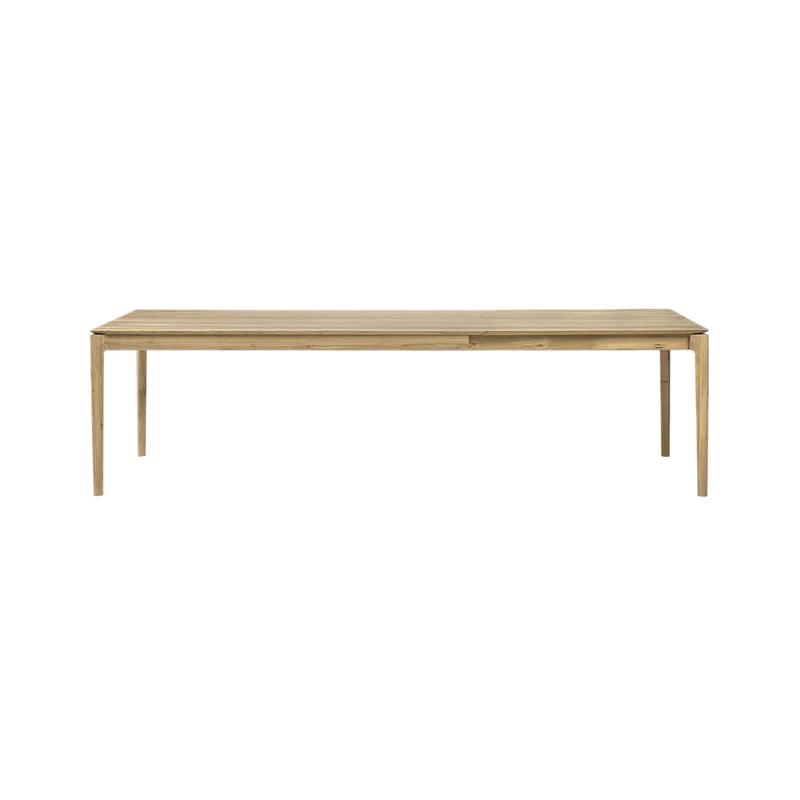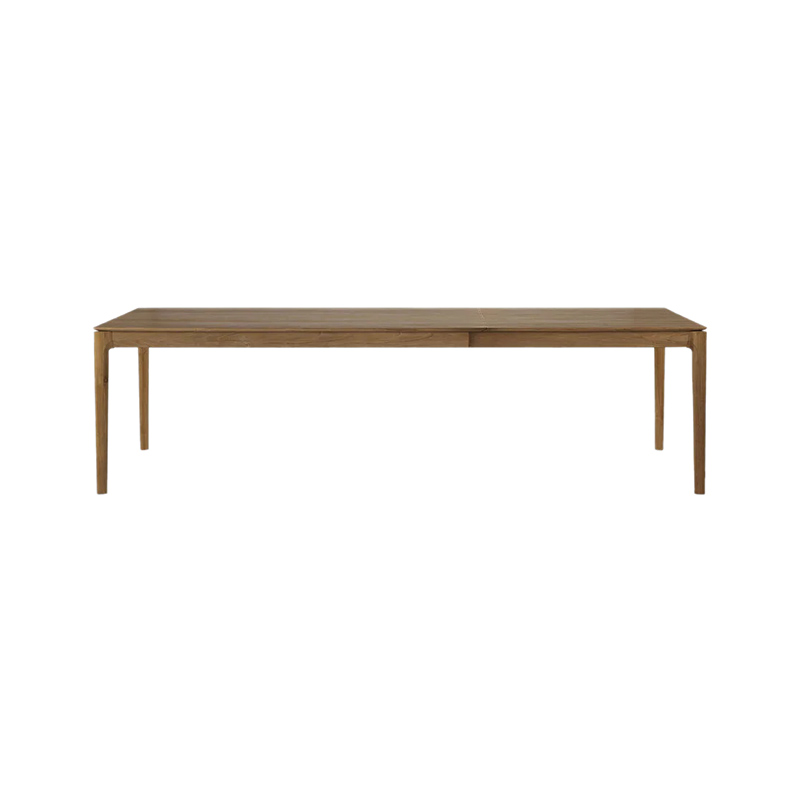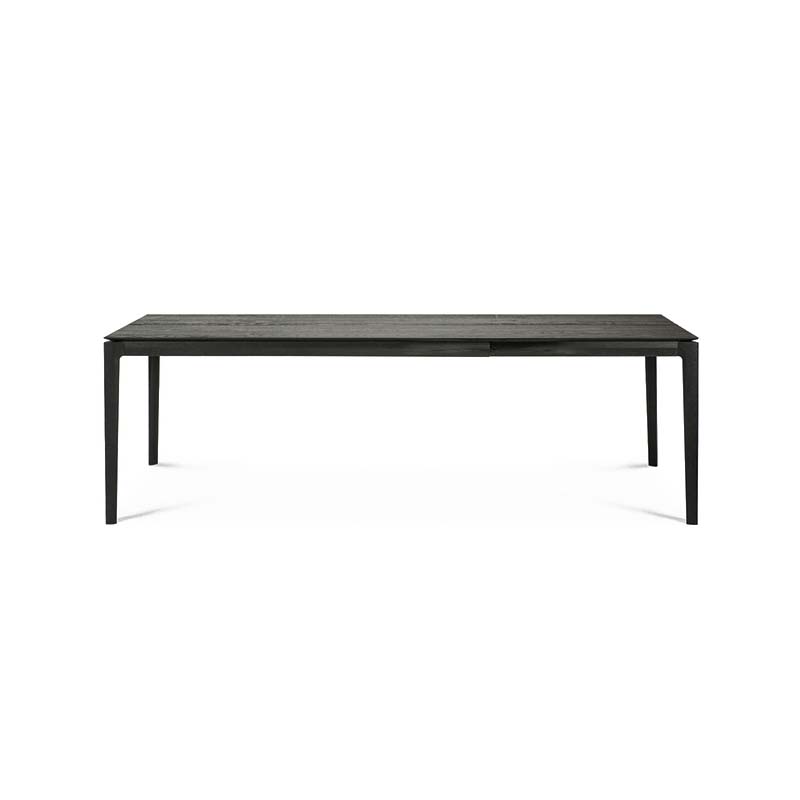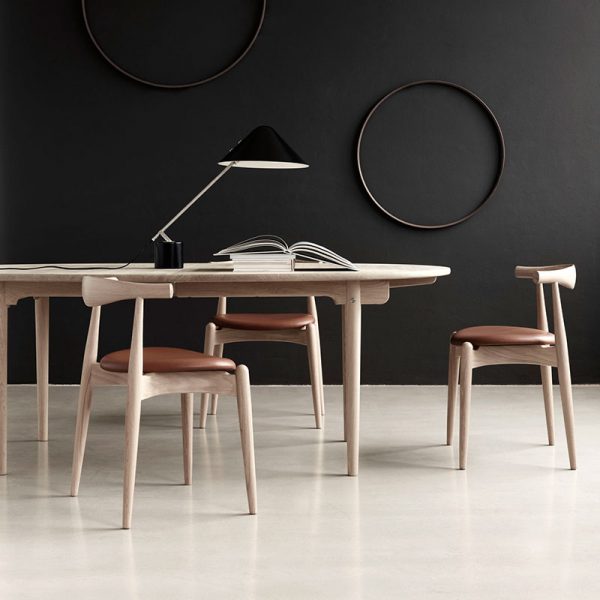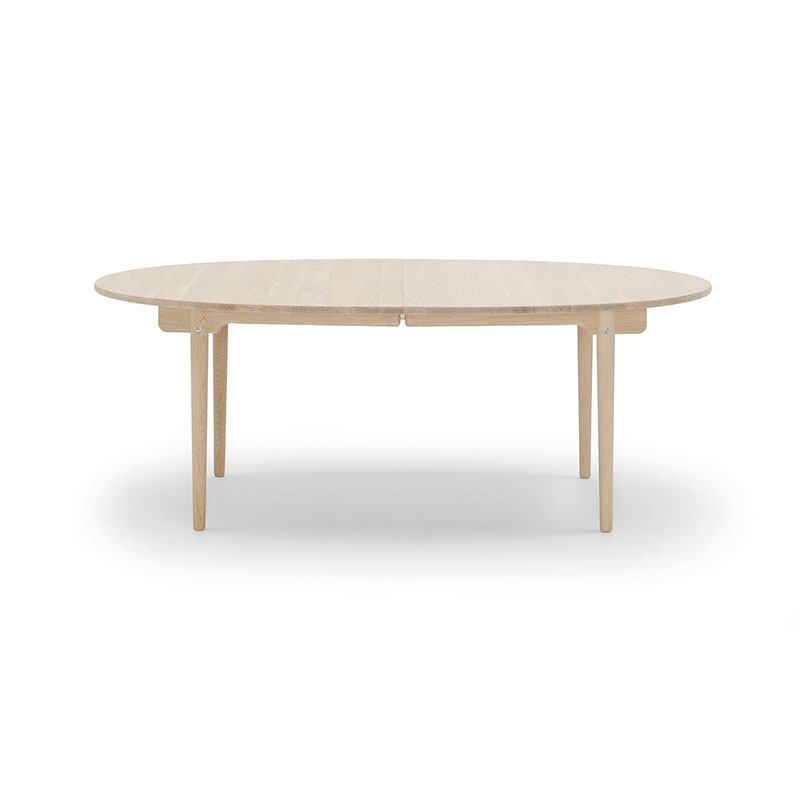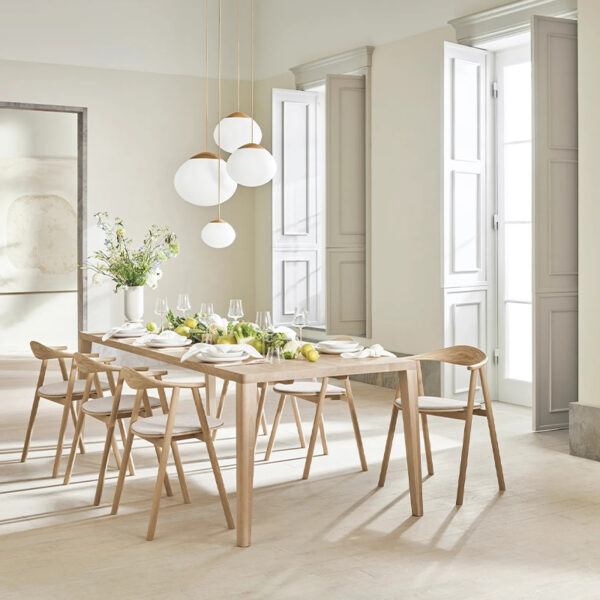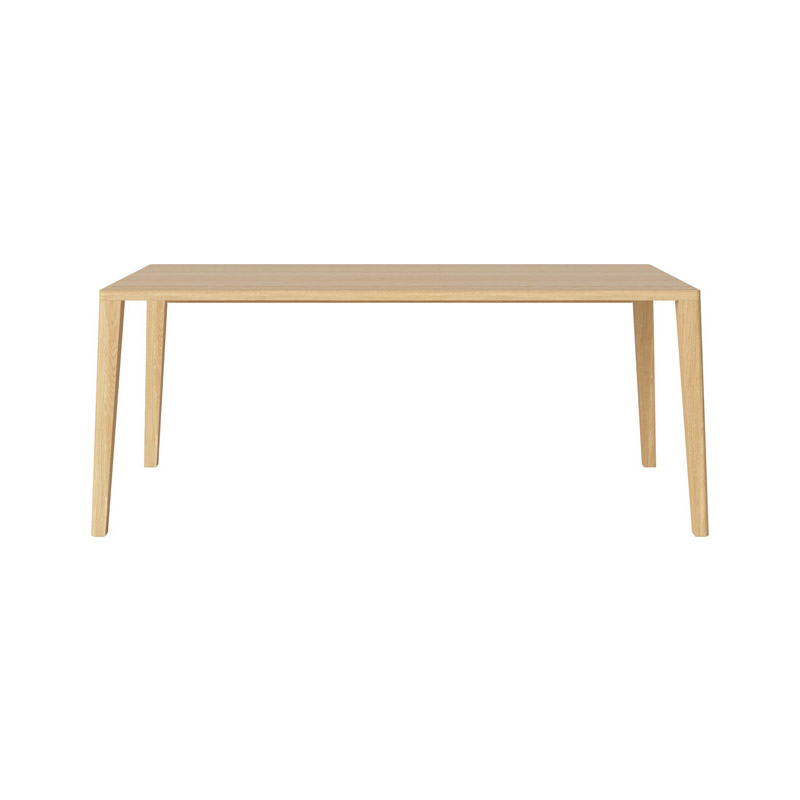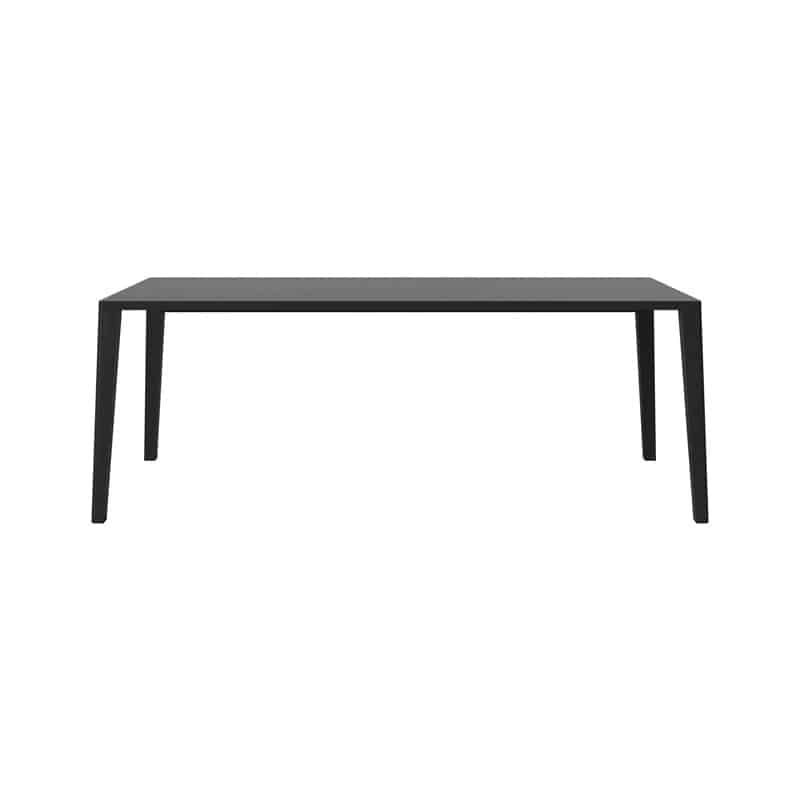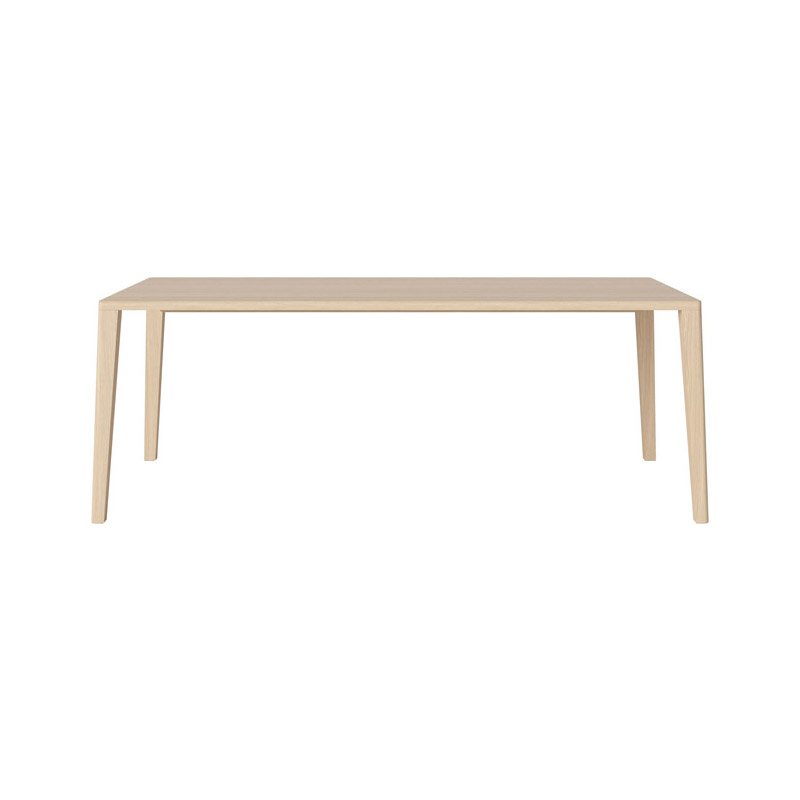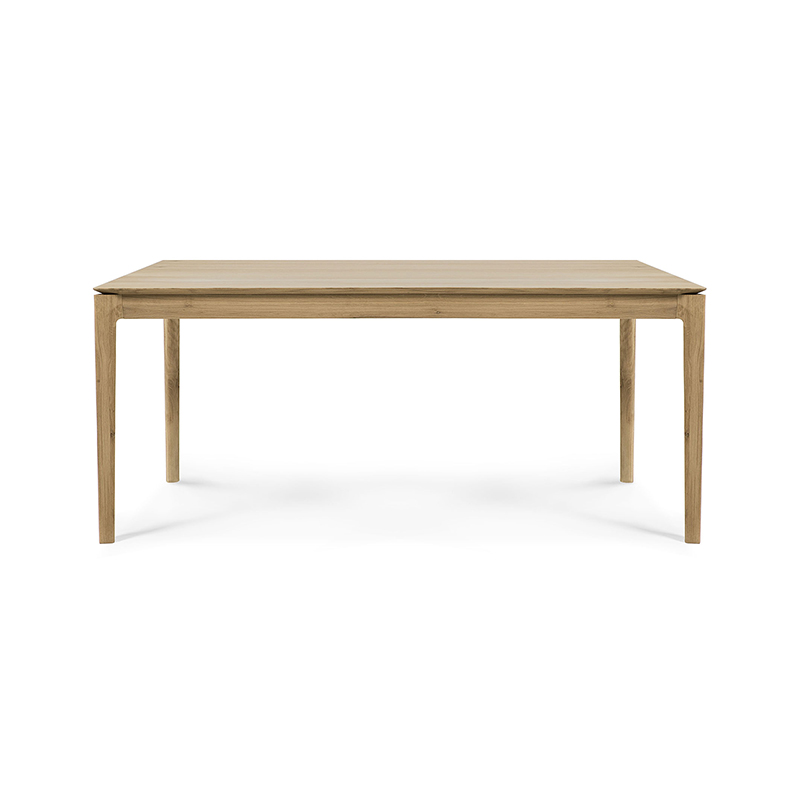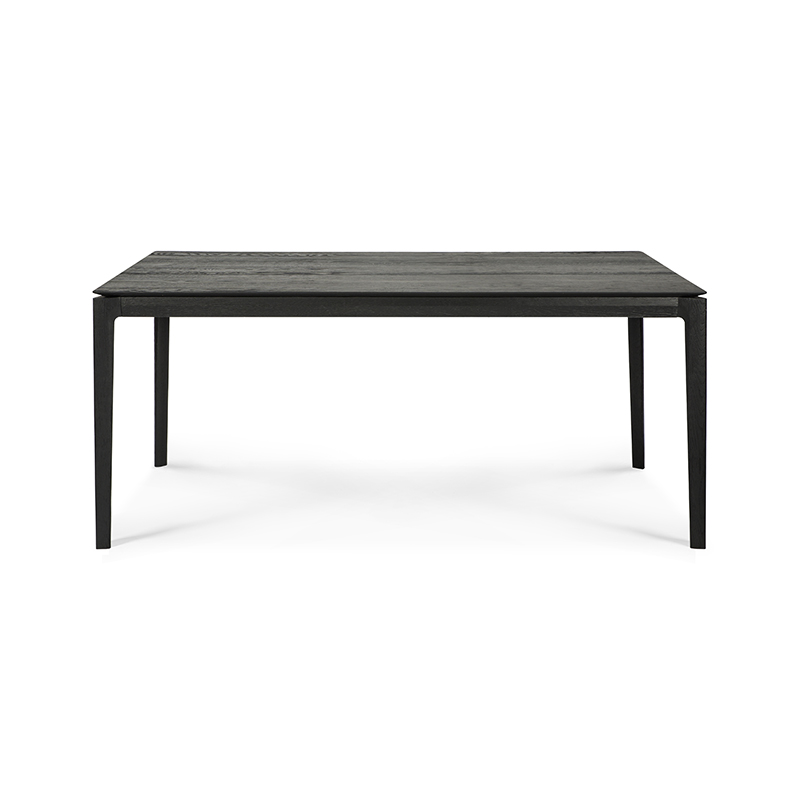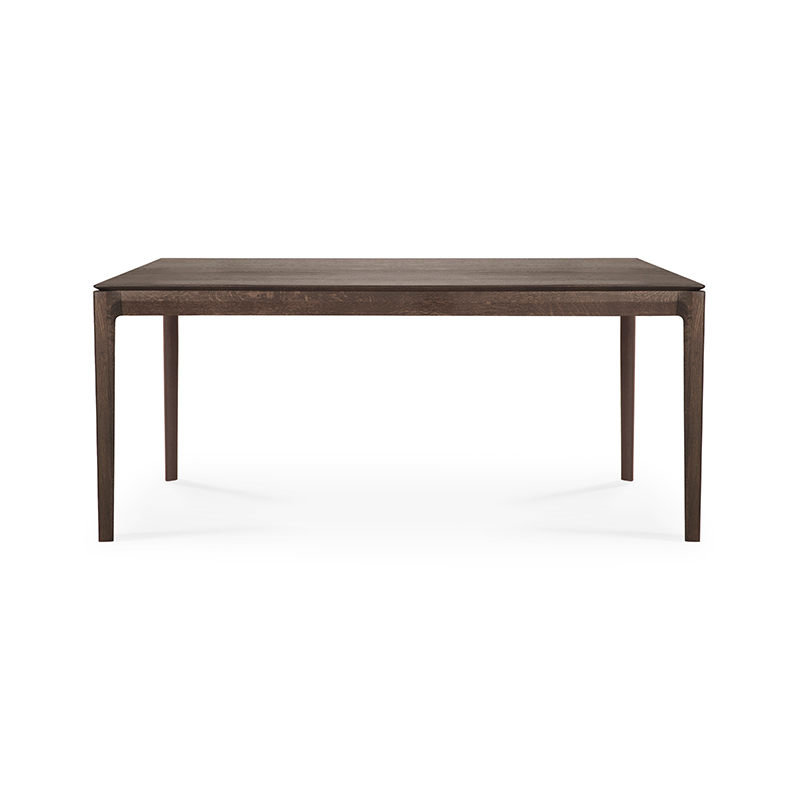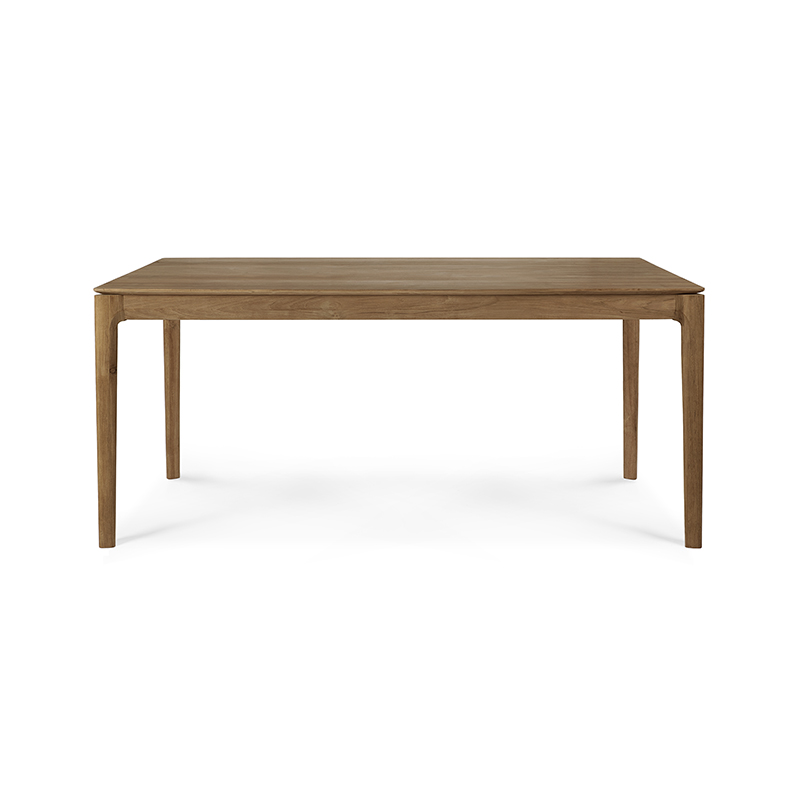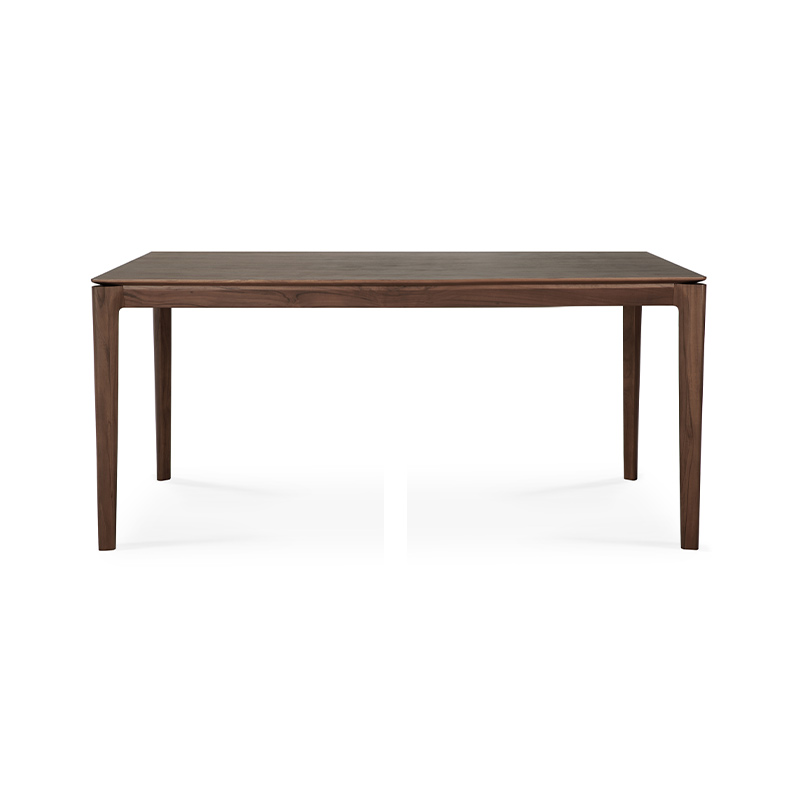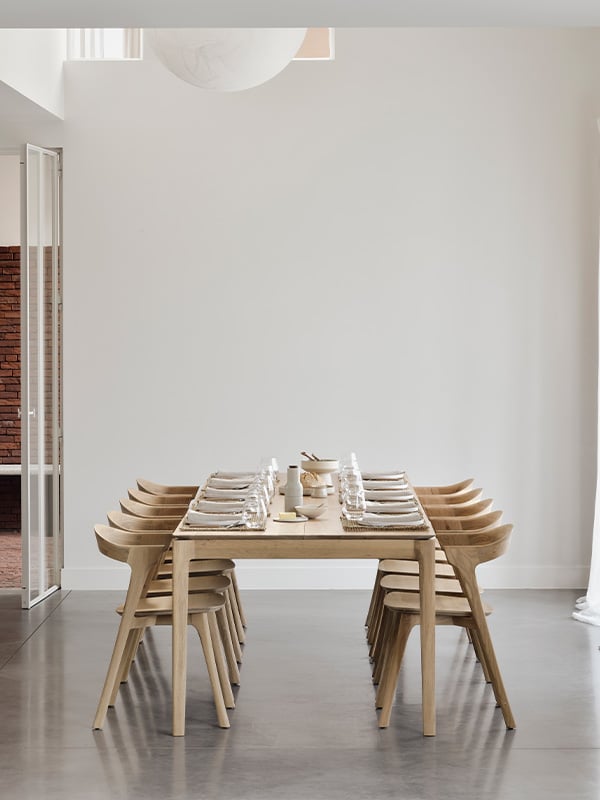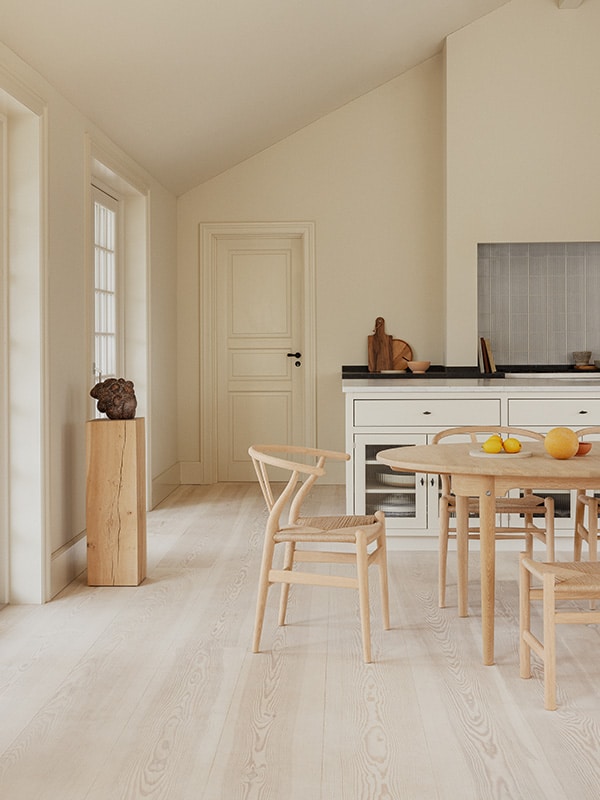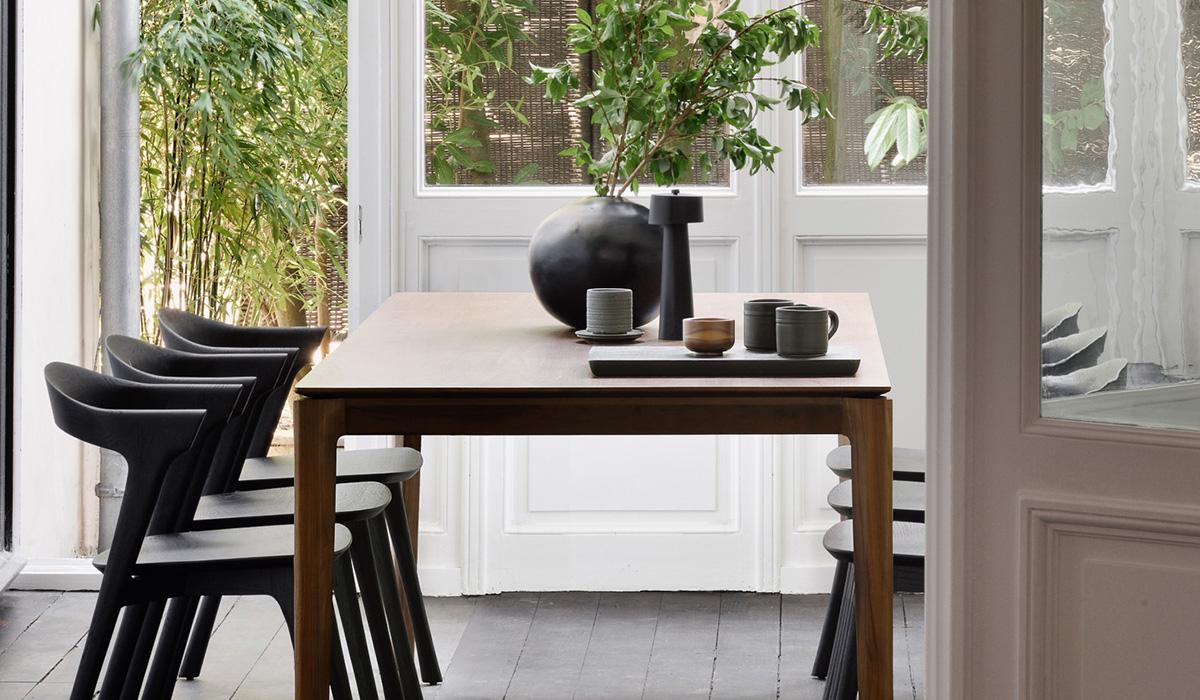
How To Get The Right Size & Shape Dining Table
Table of contents
What is the Best Shape for a Dining Room Table?
The journey to find the perfect dining table shape involves more than assessing how it looks in your dining room. Indeed, it’s about how the table enhances your everyday dining experience. Additionally, how the table fits into your lifestyle is crucial. Each shape, from round to rectangular, brings its own charm and functional benefits to your home. In this guide, we’ll explore the significance of choosing the right shape. Thereby helping you to understand how it impacts the atmosphere, functionality, and flow of a modern dining room.
Why the Right Shape Dining Table is so Important.
Now, as we’ve already mentioned selecting the right shape for your dining room table is more than just a design choice. It’s about creating an inviting atmosphere that aligns with and reflects your lifestyle. The dining table, often the heart of the home, is a place where meals are shared, stories are told, and memories are made. Therefore, it’s not just about the size and layout of your dining area. Moreover, it’s about the style and function you envision for your dining room. Different shapes of tables serve different purposes. From intimate family dinners to large social gatherings, the shape of your dining table can significantly influence the ambience of your dining space.
Understanding Table Shapes and Room Dynamics
The shape of a dining table plays a crucial role in defining the room’s dynamics. Not only this, but they have a significant effect on the flow of social interactions. Each table shape has its unique attributes and can affect how people interact with the space and each other. Round tables, for instance, are known for fostering a sense of equality and intimacy among diners. As a result, they’re ideal for encouraging conversation and engagement.
Conversely, Rectangular tables, offer a more traditional micro-social interaction. They offer a layout that can accommodate more guests and suit longer narrower spaces. Understanding these nuances is key to choosing a table that not only fits your room but also enhances your dining experience.
A Table Shape for Every Dining Room
This section explores the variety of table shapes available. Here we examine how they cater to different dining room configurations and styles. From the intimacy, round tables offer to the beauty of oval tables. Or, the practicality of square and rectangular shapes. Each dining table design offers unique characteristics fit for a variety of modern applications. Discover how these shapes can transform your dining for life. Whether you’re hosting a large gathering or enjoying a quiet family meal, the right table shape will make all the difference.
The Benefits of Round Tables: Intimacy and Free-Flowing
Round tables, exemplified by the round version of the Dulwich Dining Table, are an excellent choice for smaller dining areas. Not only this but they also work perfectly in square-shaped dining rooms. Of course, their circular shape eliminates sharp corners. Thus, this makes them a safe and practical option for families with young children too.
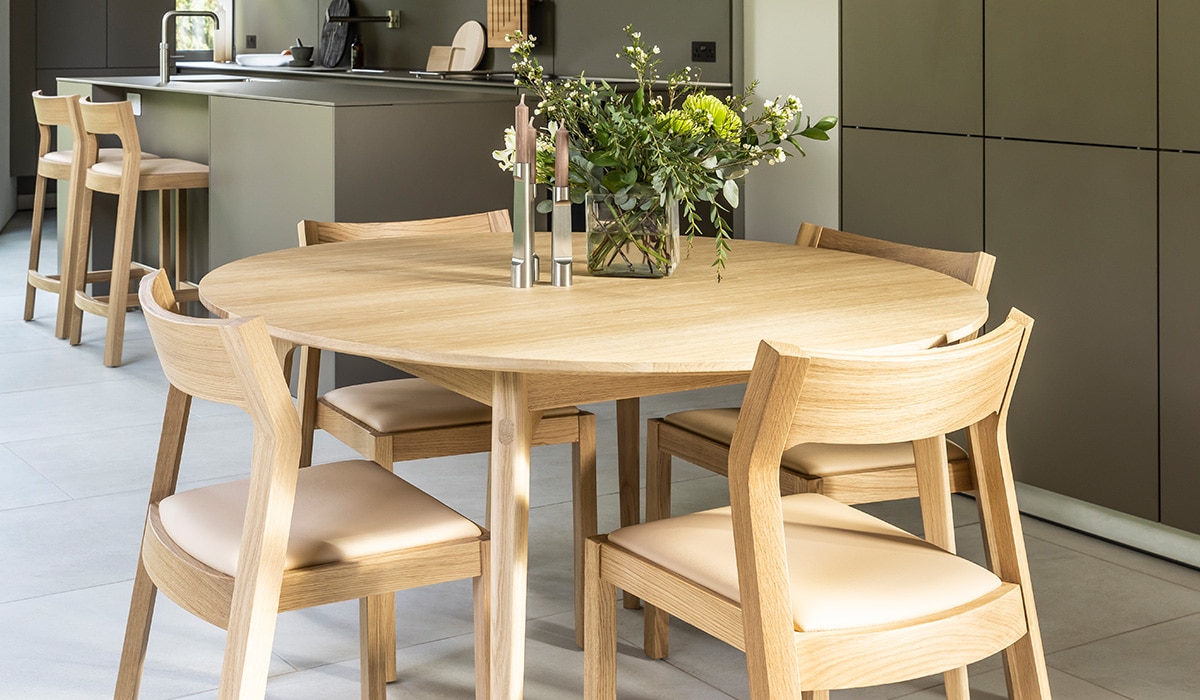
Additionally, round tables encourage easy conversation, since everyone is equidistant from the centre. This facilitates a more communal and socially inclusive dining experience. Moreover, this shape is conducive to better traffic flow into, out of and around the room. The absence of corners creates a smoother path for movement, enhancing the overall functionality of your dining space.
The Benefits of Oval Tables: Beauty and Utility
Oval tables strike a beautiful balance between the straight lines of rectangular tables and the communal feel of round tables. An excellent example of this is the CH338 Dining Table designed by Danish design legend, Hans Wegner. Furthermore, these tables are particularly well-suited for narrow or elongated dining spaces. Ideally, where a round table might not fit comfortably. Consequently, the curved edges of an oval table contribute to a soft, inviting dining seat. Meanwhile, its elongated shape can accommodate more diners than a round table of similar size.
Additionally, oval tables more commonly offer the flexibility of extendable options. This makes them good for various dining needs, for different room sizes and occasions.
Matching Table Shapes with Room Sizes
As we’ve already alluded to choosing the right table shape isn’t just about personal taste. Ensuring a modern dining set fits well in your dining area is vital. At Olson and Baker we’re experts in matching table shapes with different room sizes. So, allow us to share how square and round tables suit smaller spaces. And demonstrate how larger rooms can accommodate rectangular and extendable tables. Understanding these dynamics ensures that your dining table not only looks great but also maximises the functionality of your space!
Square and Round Tables for Smaller Spaces
In small dining rooms, your dining table needs to maximise space and functionality, this is crucial. Additionally, it’s essential to provide enough room for comfort. A minimum available width of 60-70cm per chair is necessary. To easily move your chair in and out from under the table you need 100cm. Together these stats will give you a comfortable and relaxed dining experience. Square and round tables are particularly suited for small rooms. This is chiefly because they require less space and can fit nicely in more awkward spaces. The Ethnicraft Bok Dining Table, a compact square option, is a prime example of balancing style and substance in limited space.

Rectangular and Extendable Tables for Large Spaces
For those with larger dining rooms, rectangular tables offer ample room for guests and are well-suited for more traditional dining settings. Ironically, Ethnicraft also offers a rectangular version Bok Dining Table too. The Bok round’s rectangular counterpart is yet another prime example of a table that combines these characteristics. The Bok is one of our bestselling contemporary wood tables. The solid wood construction and clean lines make it an effortless addition to any large dining room. Popular with interior designers too it comes in every size and shape imaginable.
Conversely, extendable tables like the Dulwich Table by Matthew Hilton for Case Furniture offer incredible flexibility. Extending tables can adjust in size to accommodate different numbers of guests. This makes them ideal for hosts who frequently entertain friends and family.
Feng Shui in Dining Rooms and Table Shapes
The principles of Feng Shui are often considered in dining rooms. Many British people apply these principles without even calling it Feng Shui. Here are our top five Feng Shui principles we see successfully applied to dining rooms:
- Equal Seating Arrangement: Favour a table shape that offers equal seating positions to foster a sense of equality among diners.
- Unobstructed Chi Flow: Ensure free movement around the table for energy flow.
- Strategic Placement: Position the table to face the entrance but not directly in line with it.
- Natural Elements: Use wood and plants to bring balance and calm.
- Soft Lighting and Earthy Colours: Enhance serenity and comfort in the dining area.
A dining table’s shape and size are of course important in Feng Shui too.
Feng Shui Considerations in Dining Table Choice
Feng Shui is the ancient Chinese art of harmonising individuals with their surrounding environment. It plays a significant role in choosing your dining table shape. Specifically, round and square dining tables are often favoured in Feng Shui for their ability to create a sense of equality and harmony. Round tables in particular are most effective in promoting a balanced flow of energy (Chi).
Chi is believed to influence the overall energy and ambience of a space. In a dining room, positive chi can create a welcoming, warm, and comfortable environment that enhances the dining experience. This is especially important in a setting where family members or friends gather to share meals and engage in conversation.
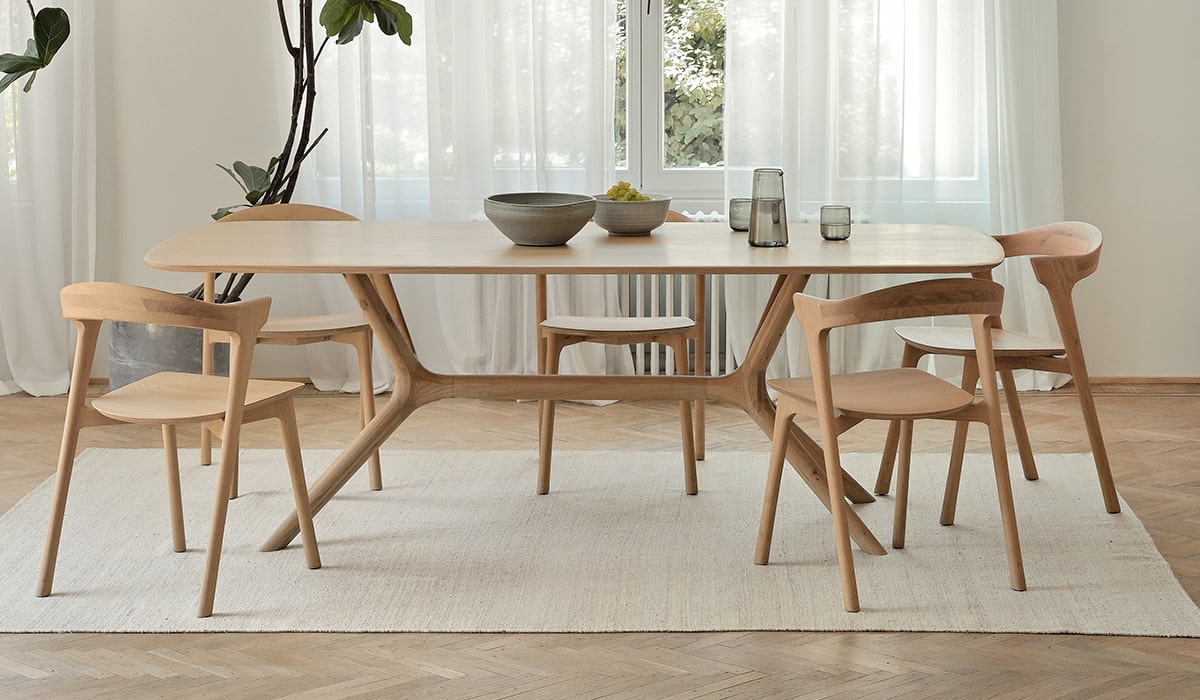
How to Choose the Right Table Shape According to Feng Shui
Applying Feng Shui to choose a dining table involves several key considerations. In square rooms, round or square tables promote balance, while oblong rooms suit rectangular or oval tables better. Round or oval tables are ideal for softening angular spaces, whereas square or rectangular tables add structure to curvy rooms.
Chi flow is essential; tables should be accessible and not block pathways. Round tables, especially with pedestal bases, encourage better movement and flexible seating. Sharp corners, or “poison arrows,” are to be avoided; round or oval tables without sharp edges are preferable for peace.
The table’s size should be proportional to the room, ensuring proper chi flow. Material and colour choices in Feng Shui flavour natural materials like wood and harmonious colours such as earth tones, creating a nurturing environment.
These principles guide the selection of a dining table that not only fits the space physically but also fosters a balanced dining atmosphere.
Understanding Extendable Tables
Extendable dining tables offer a solution to the modern challenge of space and adaptability. Furthermore, they cater to varying dining needs, from daily family meals to special occasions and entertainment. The changing size of these tables makes them a valuable addition to any modern dining room.
Types of Extension Leaf and Uses
Telescopic Extension: Best for larger, contemporary dining spaces. Moreover, this mechanism provides a seamless extension, suitable for homes that frequently entertain and require easy table size adaptation.
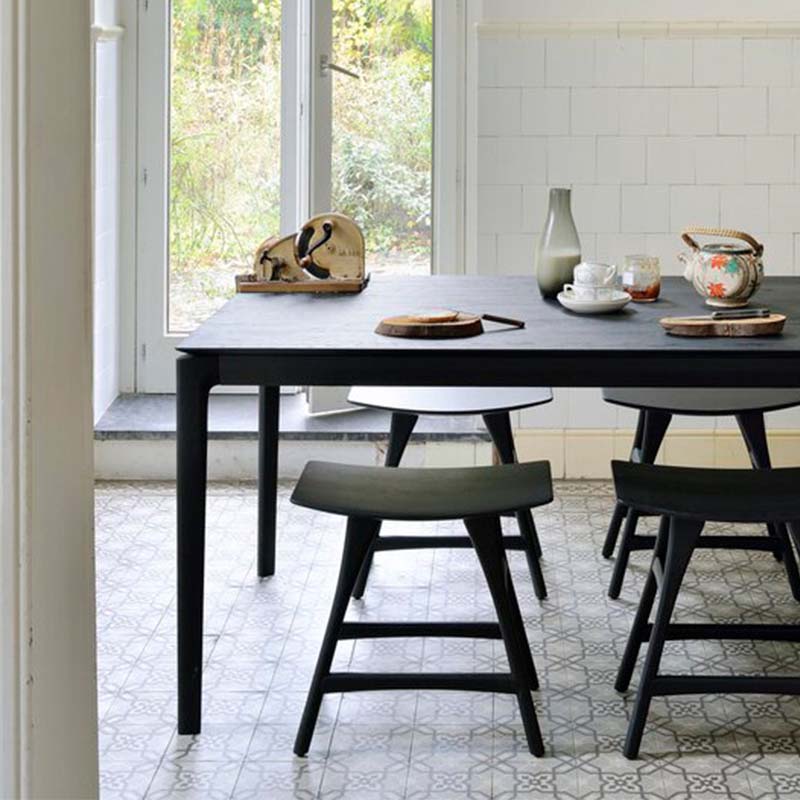
Butterfly Leaf: Ideal for medium-sized dining rooms, butterfly leaves are perfect where space is a consideration. Moreover, they provide a convenient built-in mechanism, eliminating the need for additional storage.
Drop Leaf: Perfect for small or narrow spaces, such as studio apartments. Additionally, these tables can be placed against a wall, extending as needed for different occasions.
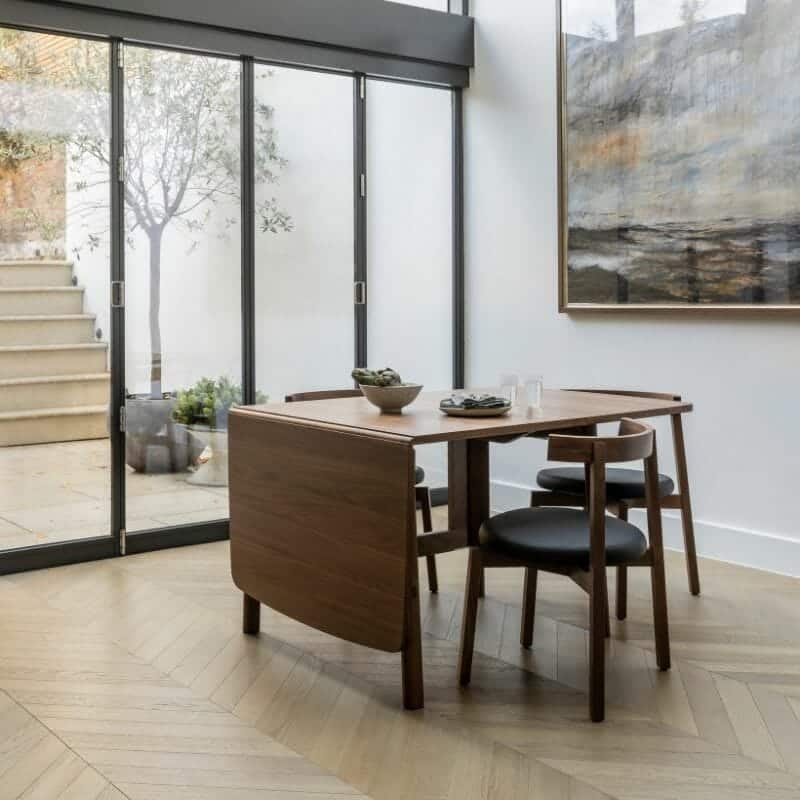
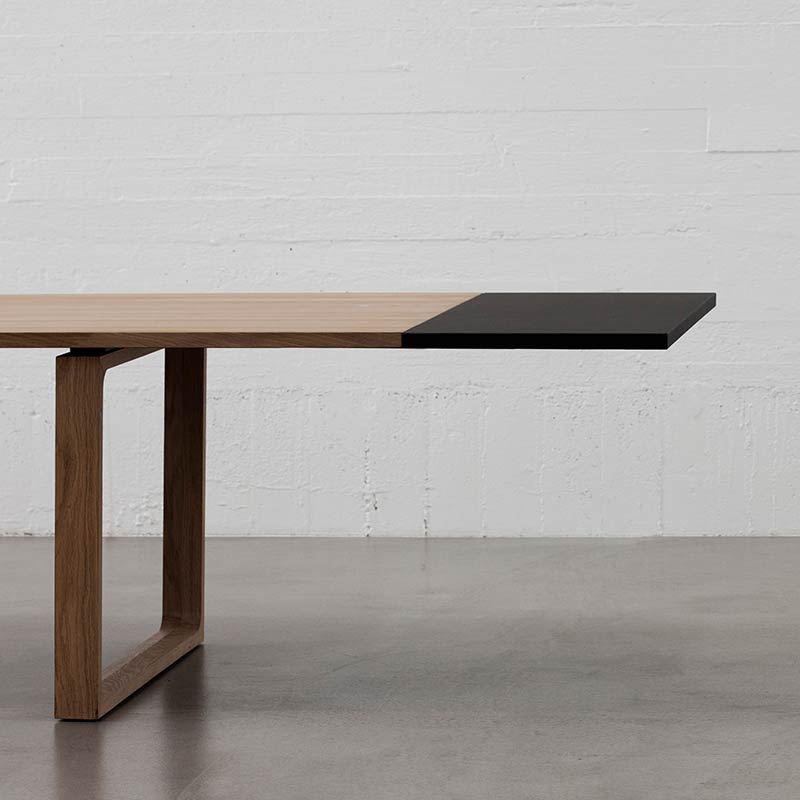
Removable Leaf: Suitable for larger dining rooms with ample storage space. Furthermore, this type is ideal for homes hosting larger gatherings, offering flexibility for traditional dining settings.
Self-Storing Leaf: Works well in moderate to large dining rooms, especially where frequent adjustments are needed. Also, this type offers ease of use without separate storage requirements.
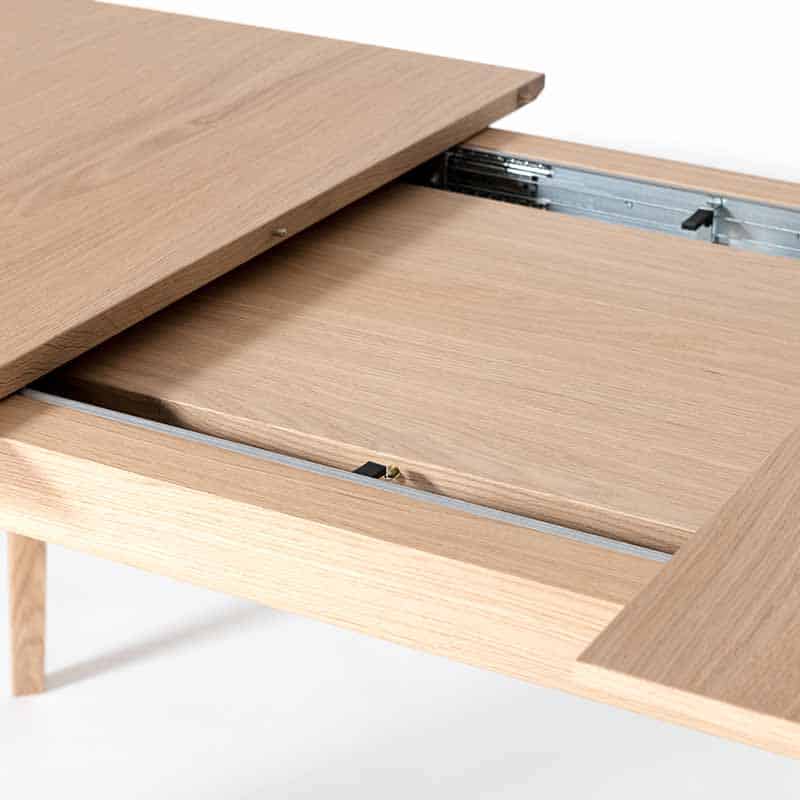
Assessing an Extending Table’s Shape: Pros and Cons
Circular Extendable Tables
Pros: Enhance intimacy and encourage conversation; ideal for small to medium-sized spaces.
Cons: Limited seating capacity compared to other shapes; extended form can be awkward.
Oval Extendable Tables
Pros: Combine the benefits of round and rectangular tables; ideal for narrow spaces.
Cons: Can be less space-efficient than rectangular tables when extended.
Square Extendable Tables
Pros: Compact and great for small spaces; adapts for both intimate and larger gatherings.
Cons: Limited extension compared to rectangular tables; can be bulky in smaller rooms.
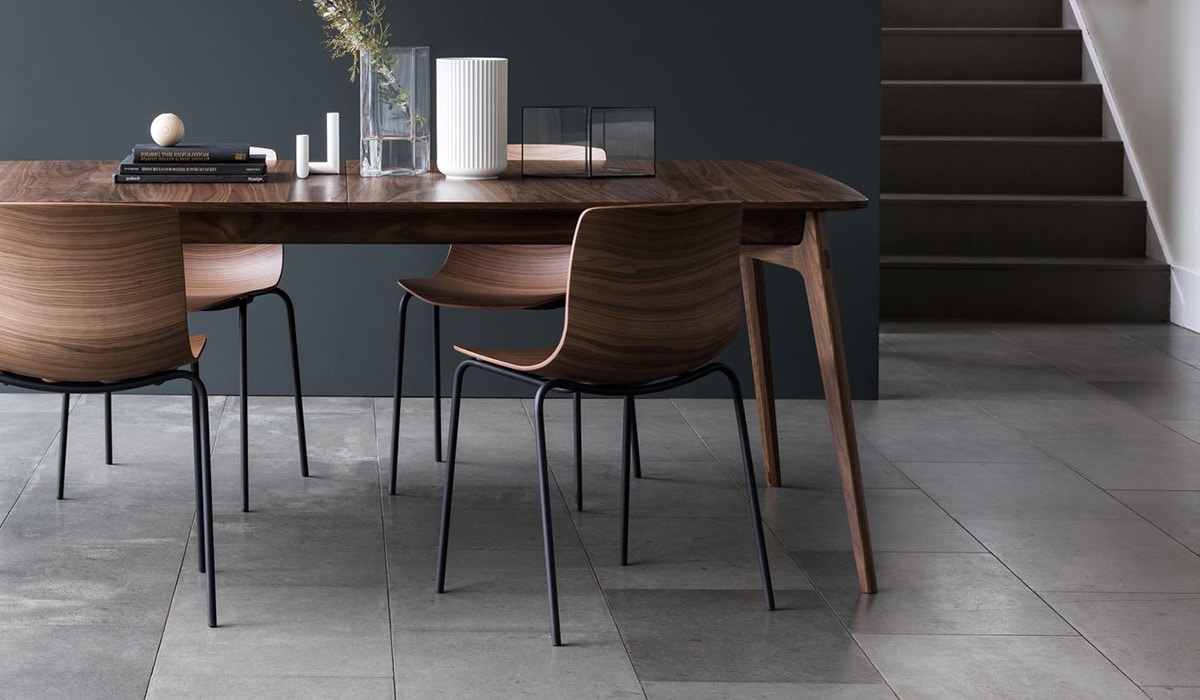
Rectangular Extendable Tables
Pros: Maximum seating capacity for various rooms of larger sizes and shapes.
Cons: Can take up significant space when extended; makes closer conversation more difficult when compared to round tables.
The Right Questions to Ask Yourself
- Room Dimensions and Layout
- What are the dimensions of your dining room? (Provide length, width, and height)
- Is the room layout square, rectangular, or open-plan?
- Seating Capacity
- How many people do you typically seat at your dining table?
- Do you often host large gatherings or prefer intimate family meals?
- Lifestyle and Usage
- How do you primarily use your dining table? (E.g., daily meals, formal dining, work/study, etc.)
- Are there children or elderly individuals in your household?
- Aesthetic Preferences
- What is your preferred interior design style? (E.g., modern, traditional, minimalist, etc.)
- Do you favor any particular materials or color schemes for furniture?
- Space Efficiency
- In your current setup, do you feel the need for more floor space when the table is not in use?
- Would a table that changes in size (extendable/retractable) be beneficial for your space?
- Feng Shui Considerations
- Do you follow Feng Shui principles or have any specific cultural preferences regarding table shapes?
- Budget Constraints
- What is your budget range for a new dining table?
- Additional Features
- Are there any specific features you are looking for in a dining table? (e.g., extendable, with/without a leaf, pedestal base, etc.)
- Current Challenges
- Have you faced any issues with your current dining table or previous ones?
- Special Requirements
- Are there any unique aspects of your lifestyle or dining room that might influence your table choice? (E.g., pets, frequent moves, disability considerations, etc.)
So, What Now?
Well, If your room is small and square, and you prefer intimate meals or have a small family, a round or square table would be ideal.
For long, narrow rooms, especially if you host larger gatherings, consider a rectangular or extendable table.
If you use your table for multiple purposes and have an open-plan space, an oval or round extendable table could offer the flexibility you need.
If Feng Shui is important to you, and you have a medium-sized room, a round or oval table can help create a harmonious energy flow.
Should you need a table that saves space when not in use, look for drop-leaf or butterfly-leaf tables.
For those with a modern aesthetic and regular large gatherings, an extendable rectangular table in a material that matches your style would be best.
In conclusion, the best shape for your dining room table depends on the specific needs and characteristics of your space, your lifestyle, and your personal preferences. Whether it’s the communal nature of a round table, the sleek elegance of an oval table, or the practicality of a square table, each shape offers unique benefits. Although, the flexibility of a rectangular table cannot be overlooked. The key is to balance functionality with aesthetics, ensuring that your dining table fits beautifully into your dining room. Moreover, it should enhance the dining experience for you and your guests. Whether it’s everyday use or an occasional dinner party. By carefully considering your room layout, seating needs, and lifestyle, you can select the ideal dining table shape. This will make your dining area both inviting and functional.
< Back to all articles
